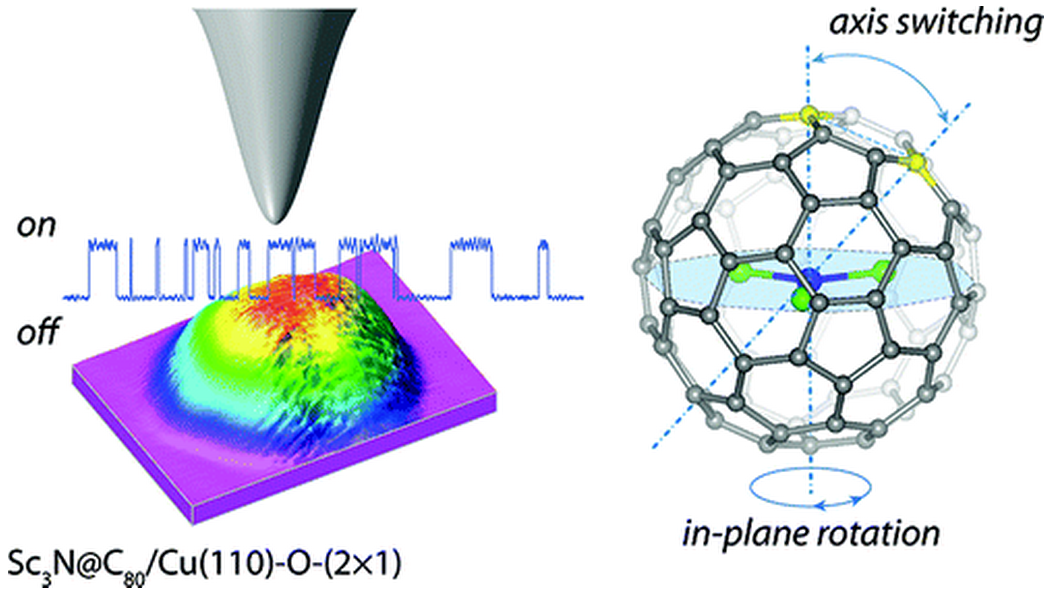Single-molecule electronic switch supports six logic states
December 5, 2011

Single-molecule switch, with scandium nitride molecule embedded in fullerene structure (credit: University of Pittsburgh/Nano Letters)
Another single-molecule electronic switch has been invented by researchers at the University of Pittsburgh, with the advantage of integration into multiple-logic-state molecular devices, according to the researchers.
The switch could also enable smaller, faster and more energy-efficient electronics.
How it works
The prototype switch was created by embedding a triangular cluster of Sc3N (scandium nitride) — three metal atoms held together by a nitrogen atom — within an fullerene (carbon atoms in a spherical shape) cage. The cluster is sandwiched between two electrodes consisting of an atomically flat copper oxide substrate and an atomically sharp tungsten tip. By applying a voltage pulse to the tip, the Sc3N molecule can be rotated predictably among six logic states — without changing the spherical shape of the carbon cage.
This design is superior to other single-molecule switches, because of the constant spherical shape, which means the molecular switches can be integrated as one-nanometer building blocks into multiple-logic-state molecular devices and massively parallel computing architectures, said Hrvoje Petek, principal investigator and professor of physics and chemistry in the Kenneth P. Dietrich School of Arts and Sciences and codirector of the Petersen Institute for NanoScience and Engineering (PINSE) at Pitt. The cage design also protects the Sc3N molecule inside so it can function without influence from outside chemicals.
The research was supported by a $1 million grant from the W.M. Keck Foundation. It was led by Petek in collaboration with chemists at the Leibnitz Institute for Solid State Research in Dresden, Germany, and theoreticians at the University of Science and Technology of China in Hefei, People’s Republic of China.
Ref.: Tian Huang, et al. A Molecular Switch Based on Current-Driven Rotation of an Encapsulated Cluster within a Fullerene Cage. Nano Letters, 2011; 111123145903006 DOI: 10.1021/nl2028409